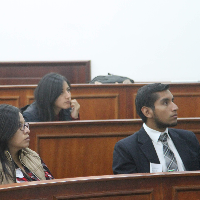Preprint
Article
COVID-19 Impacts on Beaches and Coastal Water Pollution: Management Proposals Post-pandemic
Altmetrics
Downloads
1639
Views
4401
Comments
0
This version is not peer-reviewed
Preprints on COVID-19 and SARS-CoV-2
Submitted:
14 June 2020
Posted:
14 June 2020
You are already at the latest version
Alerts
Abstract
The COVID-19 pandemic has obliged Governments all around the world to take confinement and social 13 distancing measures. The reduction of leisure and production activities on beaches and ports have 14 disappeared direct and indirect contamination such as plastics, hydrocarbon spill, microbiological loads, 15 noise level, etc. leading to temporary improved environmental conditions, converting the beaches 16 similar to Marine Protected Areas. Some conditions are briefly analyzed through local surveys and in situ 17 observations in the popular beaches and ports of Salinas, Manta and Galápagos. 97-99 % of surveyed 18 people agreed that beaches have notoriously improved during confinement at least from visual 19 observation. On a scale from 1 (worst) to 5 (best), the beaches were rated 2.23 and 2.83 (less than 20 acceptable) before quarantine, and 4.48 and 4.33 after it for Salinas and Manta respectively. The 21 beaches have less garbage in general and plastic, even though there has been an increase in plastic and 22 face mask production around the world. In Salinas, 72%, and 23 % of surveyed people have seen small 23 pelagic fish, whilst in Manta 75%, and 41% of people saw the same, but also 17% of people have seen 24 whales (humpback and shark-whales) and dolphins practically swimming on the beach. Manta rays, 25 turtles, and other types of species were also observed. In Galapagos beaches, turtles have been 26 observed many more times than usual. The main plausible reason is the decrease in noise level. It is 27 recommended to take this unique opportunity, to construct a baseline data and information on physical, 28 chemical, biological, microbiological coastal oceanographic science, and from them to establish a proper 29 Coastal Zone Management based on beach description, water, and beach quality, human dimension, 30 and economic value indexes. This data and information construction should ideally be done before the 31 beaches are open.
Keywords:
Subject: Environmental and Earth Sciences - Oceanography
Copyright: This open access article is published under a Creative Commons CC BY 4.0 license, which permit the free download, distribution, and reuse, provided that the author and preprint are cited in any reuse.
MDPI Initiatives
Important Links
© 2024 MDPI (Basel, Switzerland) unless otherwise stated





